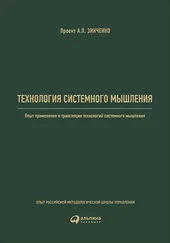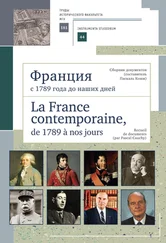Rowe, C. (1999). Receiver psychology and the evolution of multicomponent signals. Animal Behaviour , 58(5), 921–931.
Rozin, P. (1976). The evolution of intelligence and access to the cognitive unconscious. In J. M. Sprague and A. N. Epstein (eds.), Progress in psychobiology and physiological psychology , 123–134. New York: Academic Press.
Rozin, P., J. Haidt, C. R. McCauley. (1993). Disgust. In M. Lewis, J. M. Haviland (eds.), Handbook of emotions , 69–73. New York: Guildford.
Ruskin, J. (1871). Fors clavigera: Letters to the workmen and labourers of Great Britain . Orpington, UK: G. Allen.
Saler, B., C. A. Ziegler, C. B. Moore. (1997). UFO crash at Roswell: The genesis of a modern myth . Washington, DC: Smithsonian Institution.
Sales, A. D. (1991). Je suis né de vos jeux de tambours: La religion chamanique des Magar du nord . Nanterre: Société d'ethnologie.
Sanderson, J. A., M. Siegal. (1988). Conceptions of moral and social rules in rejected and nonrejected preschoolers. Journal of Clinical Child Psychology , 17(1), 66–72.
Schaik, C. P. van, M. A. Van Noordwijk, B. Warsono, E. Sutriono. (1983). Party size and early detection of predators in Sumatran forest primates. Primates , 24(2), 211–221.
Schelling, T. (1960). The strategy of conflict . Cambridge: Harvard University Press.
Schimel, J., L. Simon, J. Greenberg, T. Pyszczynski, S. Solomon, J. Waxmonsky, and J. Arndt. (1999). Stereotypes and terror management: Evidence that mortality salience enhances stereotypic thinking and preferences. Journal of Personality & Social Psychology , 77(5), 905–926.
Severi, C. (1993). Talking about souls. In P. Boyer (ed.), Cognitive aspects of religious symbolism , 165–181. Cambridge: Cambridge University Press.
Sharf, R. H. (1998). Experience. In M. C. Taylor (ed.), Critical terms in religious studies , 94–116. Chicago: University of Chicago Press.
Sidanius, J., F. Pratto. (1999). Social dominance: An intergroup theory of social oppression and hierarchy . Cambridge: Cambridge University Press.
Siegal, M., R. M. Storey. (1985). Day care and children's conceptions of moral and social rules. Child Development , 56(4), 1001–1008.
Silk, J. B., E. Kaldor, R. Boyd. (2000). Cheap talk when interests conflict. Animal Behaviour , 59(2), 423–432.
Simons, D. J., F. C. Keil. (1995). An abstract to concrete shift in the development of biological thought: The insides story. Cognition , 56(2), 129–163.
Smetana, J. G., M. Kelly, C. T. Twentyman. (1984). Abused, neglected, and nonmaltreated children's conceptions of moral and social-conventional transgressions. Child Development , 55(1), 277–287.
Snow, A. J. (1922). A psychological basis for the origin of religion. Journal of Abnormal Psychology & Social Psychology , 17, 254–260.
Somerfield, D. (1999). Capgras syndrome and animals. International Journal of Geriatric Psychiatry , 14(10), 893–894.
Song, M.-J., J. G. Smetana, S. Y. Kim. (1987). Korean children's conceptions of moral and conventional transgressions. Developmental Psychology , 23(4), 577–582.
Sperber, D. (1975). Rethinking symbolism . Cambridge: Cambridge University Press.
Sperber, D. (1985). Anthropology and psychology: Towards an epidemiology of representations. Man , 20, 73–89.
Sperber, D. (1996). Explaining culture: A naturalistic approach . Oxford: Blackwell.
Stewart, C. (1991). Demons and the Devil: Moral imagination in modern Greek culture . Princeton: Princeton University Press.
Stocking, G. W. (1984). Functionalism historicized: Essays on British social anthropology . Madison: University of Wisconsin Press.
Stocking, G. W. (1987). Victorian anthropology . New York and London: Free Press and Collier Macmillan.
Stone, V. E., S. Baron-Cohen, L. Cosmides, J. Tooby, R.T. Knight. (1997). Selective impairment of social inferences following orbitofrontal cortex damage. Paper presented at the Cognitive Science Society (U.S.) Conference (19th), Stanford, California.
Stringer, C., C. Gamble. (1993). In search of the Neanderthals: Solving the puzzle of human origins . London: Thames and Hudson.
Sugiyama, L. (1996). In Search of the Adapted Mind: Cross-cultural evidence for human cognitive adaptations among the Shiwiar of Ecuador and the Yora of Peru. Ph.D. dissertation. University of California, Santa Barbara.
Symons, D. (1979). The evolution of human sexuality . New York: Oxford University Press.
Tajfel, H. (1970). Experiments in inter-group discrimination. Scientific American , 223, 96–102.
Taves, A. (1999). Fits, trances, and visions: Experiencing religion and explaning experience from Wesley to James . Princeton: Princeton University Press.
Taylor, M. (1999). Imaginary companions and the children who create them . New York: Oxford University Press.
Tisak, M. S., E. Turiel. (1984). Children's conceptions of moral and prudential rules. Child Development , 55(3), 1030–1039.
Tisak, M. S., E. Turiel. (1988). Variation in seriousness of transgressions and children's moral and conventional concepts. Developmental Psychology , 24(3), 352–357.
Tomasello, M. (2000). The cultural origins of human cognition . Cambridge: Harvard University Press.
Tomasello, M., A. C. Kruger, H. H. Ratner. (1993). Cultural learning. Behavioral & Brain Sciences , 16, 495–510.
Tooby, J., I. DeVore. (1987). The reconstruction of hominid behavioral evolution through strategic modeling. In W. Kinzey (ed.), Primate models of hominid behavior , 23–36. New York: SUNY [State University of New York] Press.
Trinkhaus, E. (1989). Comments on "Grave shortcomings: The evidence for Neanderthal burial" by R. H. Gargett. Current Anthropology , 30, 183–185.
Trinkhaus, E., P. Shipman. (1993). The Neandertals: Changing the image of mankind . New York: Knopf.
Trivers, R. (1971). The evolution of reciprocal altruism. Quarterly Review of Biology , 46, 35–57.
Tulving, E. (1983). Elements of episodic memory . Oxford: Oxford University Press.
Tulving, E., M. Lepage. (2000). Where in the brain is the awareness of one's past? In D. L. Schacter, E. Scarry (eds.), Memory, brain, and belief , 208–228. Cambridge: Harvard University Press.
Turiel, E. (1983). The development of social knowledge: Morality and convention . Cambridge: Cambridge University Press.
Turiel, E. (1994). The development of social-conventional and moral concepts. In P. Bill (ed.), Fundamental research in moral development. Moral development: A compendium , vol. 2, 255–292. New York: Garland.
Turiel, E. (1998). The development of morality. In W. Damon (ed.), Handbook of child psychology . (5th ed.). Vol. 3, 863–932. New York: Wiley.
Turner, M. (1996). The literary mind . New York: Oxford University Press.
Turner, M., G. Fauconnier. (1995). Conceptual integration and formal expression. Metaphor & Symbolic Activity , 10(3), 183–204.
Tylor, E. B. (1871). Primitive culture . London: Murray.
Vidal, D. (1976). Garcons et filles: Le passage à I'âge d'homme chez les Gbaya Kara . Nanterre: Laboratoire d'Ethnologie et de Sociologie Comparative.
Viveiros de Castro, E. (1992). From the enemy's point of view: Humanity and divinity in an Amazonian society . Chicago: University of Chicago Press.
Wacholtz, E. (1996). Can we learn from the clinically significant face processing deficits, prosopagnosia and Capgras delusion? Neuropsychology Review , 6, 203–257.
Читать дальше
Конец ознакомительного отрывка
Купить книгу






![Паскаль Буайе - Анатомия человеческих сообществ [Как сознание определяет наше бытие] [litres]](/books/406575/paskal-buaje-anatomiya-chelovecheskih-soobchestv-kak-thumb.webp)

![Вера Глушкова - Смоленская земля [Природа. История. Экономика. Культура. Достопримечательности. Религиозные центры] [litres]](/books/409035/vera-glushkova-smolenskaya-zemlya-priroda-istoriya-thumb.webp)



